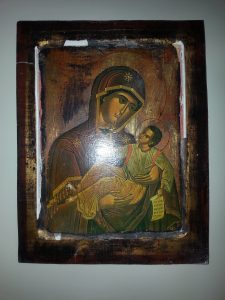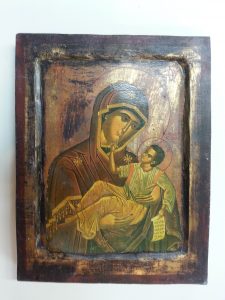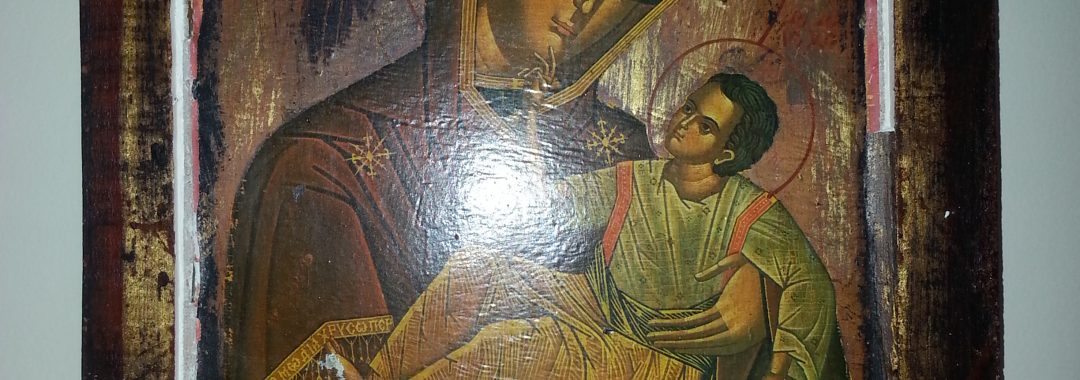Restoration of a Greek Icon

The icon as it arrived at Capital Restoration showing the missing gesso and paint.
In the Orthodox Christian Churches, icons are religious works of art which assist the worshiper to focus their attention during prayer.
Traditionally painted on wooden boards, they are vulnerable to changes in relative humidity which causes the wood support to expand and contact fracturing the paint layer and causing it to lift.
Such was the case with an icon brought to Capital Restoration last year. Although it is a recent reproduction, it utilized a solid wood board and the change in environment from Greece to the eastern seaboard of America had already caused damage to the paint and to the gesso (traditionally made from rabbit skin glue and gypsum) border which frames the painting.
During the restoration, the missing gesso was built up with fresh gesso and painted with gouache paint (a water based paint which is more pigmented and opaque than water colors).
Then the missing paint from the fringe of the Madonna's robe and the feet of the Christ Child was carefully in-painted with gouache paints. The new paint was then sealed with a coat of varnish over top of the existing varnish.

The icon after restoration with the gesso replaced and the lifting paint in-painted with gouache.
This icon is an excellent example of where the advice offered by the restorer is vitally important for the ongoing conservation of the piece.
A stable environment is critical for it's future longevity. Avoiding extreme, unheated environments like attics and basements can help.
Keeping pieces away from heating ducts and direct sunlight will help them from becoming as dry. Ideally, a whole house humidifier will keep the relative humidity within limits suitable for furniture and artwork.
John Allen of Capital Restoration provides such advice in his detailed treatment reports which accompany each restoration.

